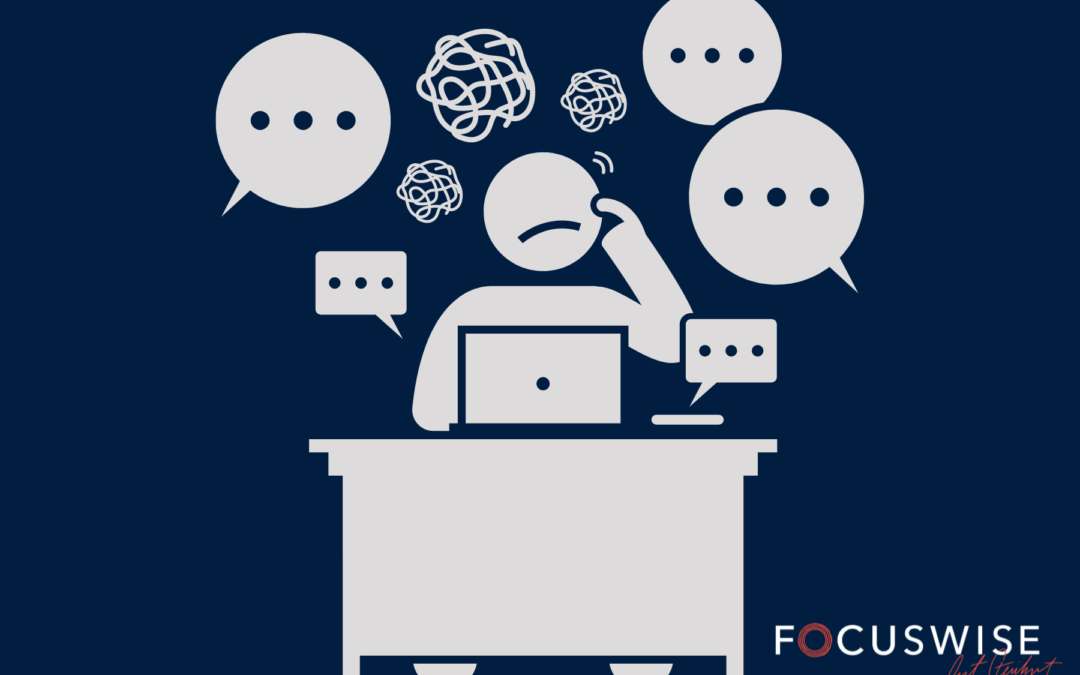28% of a knowledge worker’s time is consumed by interruptions, at a loss of about 20,000 hours, which is more than
$400,000 over the course of a single career. Wow. That’s a lot of wasted time, if you ask me! The greatest sources of interruption at work and home are external. Whether that’s coworkers interrupting our work flow, emails flooding our inbox, interpersonal conflict between coworkers, thoughts about tasks and responsibilities at home, or temptations to look at the “latest greatest thing to change our life,” distractions are always attacking our senses.
But we need to get to the root of the problem. What are the true sources of interruption? We’ve identified five sources and offer suggestions on what to do about it.
1. Attention Theft
An attention theft is someone or something external to you entering your environment without your permission and stealing your attention. My advice: lock them out!
Protocol
- Identify thieves and build barriers to prevent their access.
- Communicate when you are not available for interruptions.
- Reveal what you value by intentionally giving it periods of uninterrupted attention (e.g. mission-critical thought work, crucial conversations, and valued relationships).
- Avoid unnecessary meetings.
In order to set boundaries, you have to communicate clearly to your coworkers about levels of access to yourself. Set up “Do Not Disturb” signs outside of your working space so people know when you’re in a focused zone. If advertisements keep popping up on your web browser and stealing your attention, try ad blockers.
On the flip side, make sure you have intentional planning of fun/diversion as a team—make sure everyone knows when it’s okay to be offline! By giving yourself time to rest, your focus will be funneled into the other parts of the day—when you’re working.Your attention is valuable…don’t let someone (or something) steal it!

Stop letting attention thefts happen in your life.
2. Attention Burst
An attention burst is a spontaneous idea unrelated to a task. My advice: get it out!
Protocol
- Offload ideas to a scratch pad.
- Be sure to schedule times where you get to wander, explore, try things out, and think creatively during your week.
- Remain committed to completing the current task.
You’re in a meeting and suddenly you’re thinking about your grocery list or the big upcoming sports game, despite wanting to focus. Our minds wander, and one creative thought begets another. Explore your creativity (sometimes the best ideas come as attention bursts), but don’t let it become a source of interruption. Rein in your focus by giving your attention burst an outlet. If you let the thought go uninterrupted, it will be much harder to get your focus back on track.
3. Attention Avoidance
Attention avoidance is seeking to avoid the perceived pain of the task at hand. My advice: engage the source.
Protocol
- Change the narrative.
- Work through your emotions or grief, take a walk to encourage “soft fascination,” and get to a better emotional place.
- Meet face-to-face with the person who is dominating your emotions that day.
- Create your reframing statements.
- Break down the task.
- Change the space and time you’re in.
Attention avoidance occurs when you are associating a sense of pain, and will do anything possible to avoid the one thing you know has to be done. This might require a change of environment, a mental health break to work through the negative emotions, or getting some physical exercise if you’ve been staring at a computer screen all day. Focus means helping your heart get into it too.
By “change the narrative,” I mean lower the barriers to believing a better story about your task or your day. We are the stories we tell ourselves. We can change these stories by changing the input, moving the location, and identifying and reframing our thoughts. Prepare specific, repeatable, targeted phrases to reframe the work (that can be fun!).

Jot down creative ideas when they come to you instead of letting them become an interruption.
4. Attention Allure
Attention allure is when you are captivated by a new idea. My advice: ask the right questions and filter the answers.
Protocol
- Filter ideas that pass through your mind.
- Ask the right questions so that you can discern properly whether to ignore or pursue these ideas.
- Examples: What do I want? What do they need? What can we do?
The root cause of allure is often boredom, a lack of discipline, or even insecurity. It takes patience, and being willing to see the whole picture to stop attention allure in its tracks. It doesn’t help that our brains are being wired to think the shiny new ideas are the way to go.
When we fail to address any or all of the above, we end up in a state of…
5. Attention Overload
Attention overload occurs when the number of items that need our attention leaves us paralyzed and unable to assess or focus on anything. My advice: pause, prioritize, and process.
Protocol
- Change the settings, circumstances, and avenues of access that others have to you.
- Prioritize.
- Pair tasks wisely.
- Know when not to multi-task.
- Capitalize on time off.
Your phone is ringing, your email inbox is overflowing, you have an appointment in 90 minutes, someone from Accounting is standing in your doorway, and you haven’t even had your coffee yet. We’ve all been there. A hectic start to your morning sets you right up with attention overload. This mental state of being is not healthy, and it often leaves us paralyzed.
Attention overload leaves us with what Douglas Rushkoff called “Present Shock:” when everything happens now. He says, “The dissonance between our digital selves and our analog bodies has thrown us into a new state of anxiety.”

Protect your focus by blocking out external distractions.
Silencing Your Sources of Interruption
So where do you even start? How do you begin to silence all those sources of interruption? By raising barriers to give yourself space to deal with your current load of tasks. Take it slow, one step at a time, and you will have a greater chance of success. Your attention is valuable, so don’t waste it with distractions!
If you want an organized method to help tackle this problem, consider our self-guided FocusFit Challenge. The four week card-based program will help you eliminate chronic distractions, create space to focus, and pour your energy into the things that matter most.

